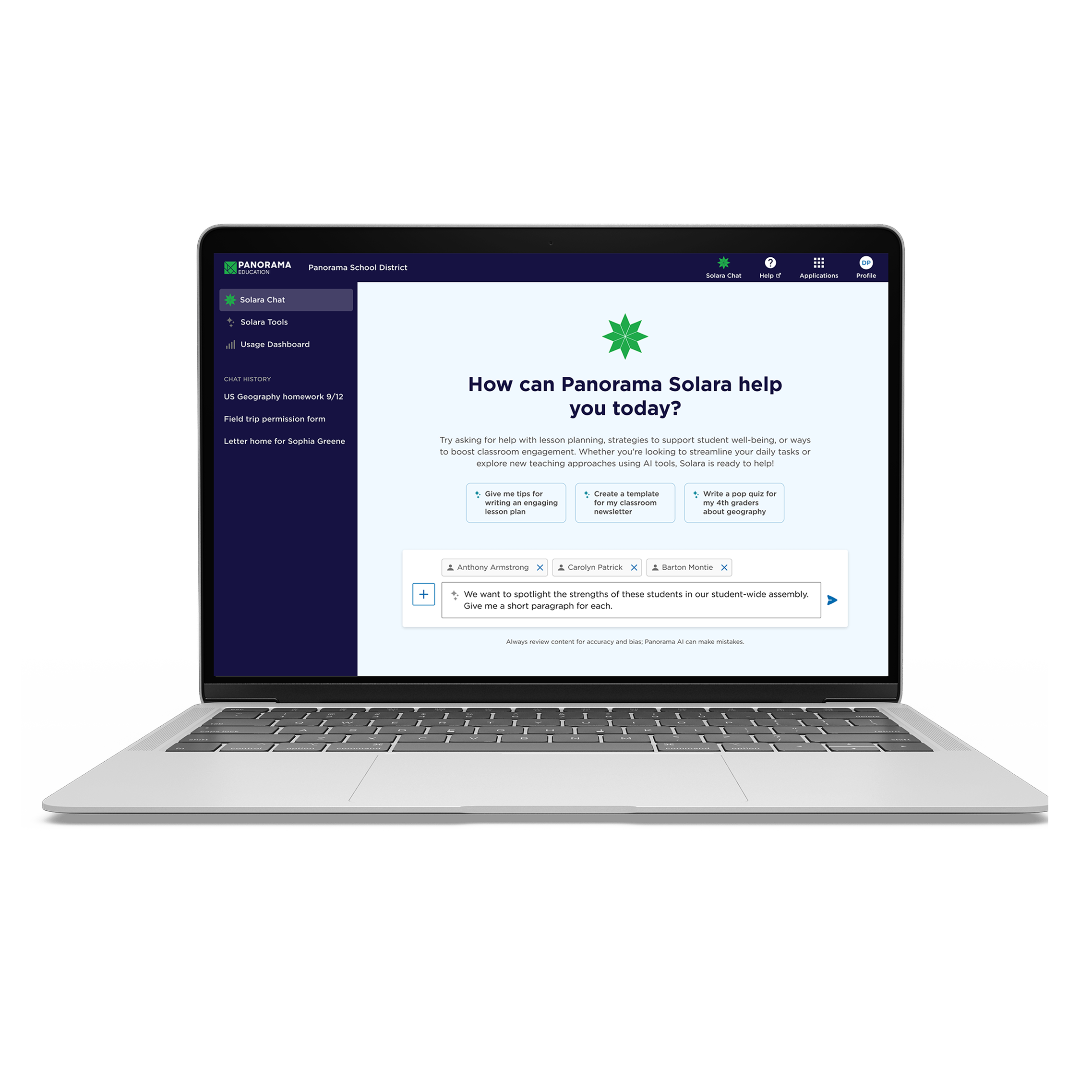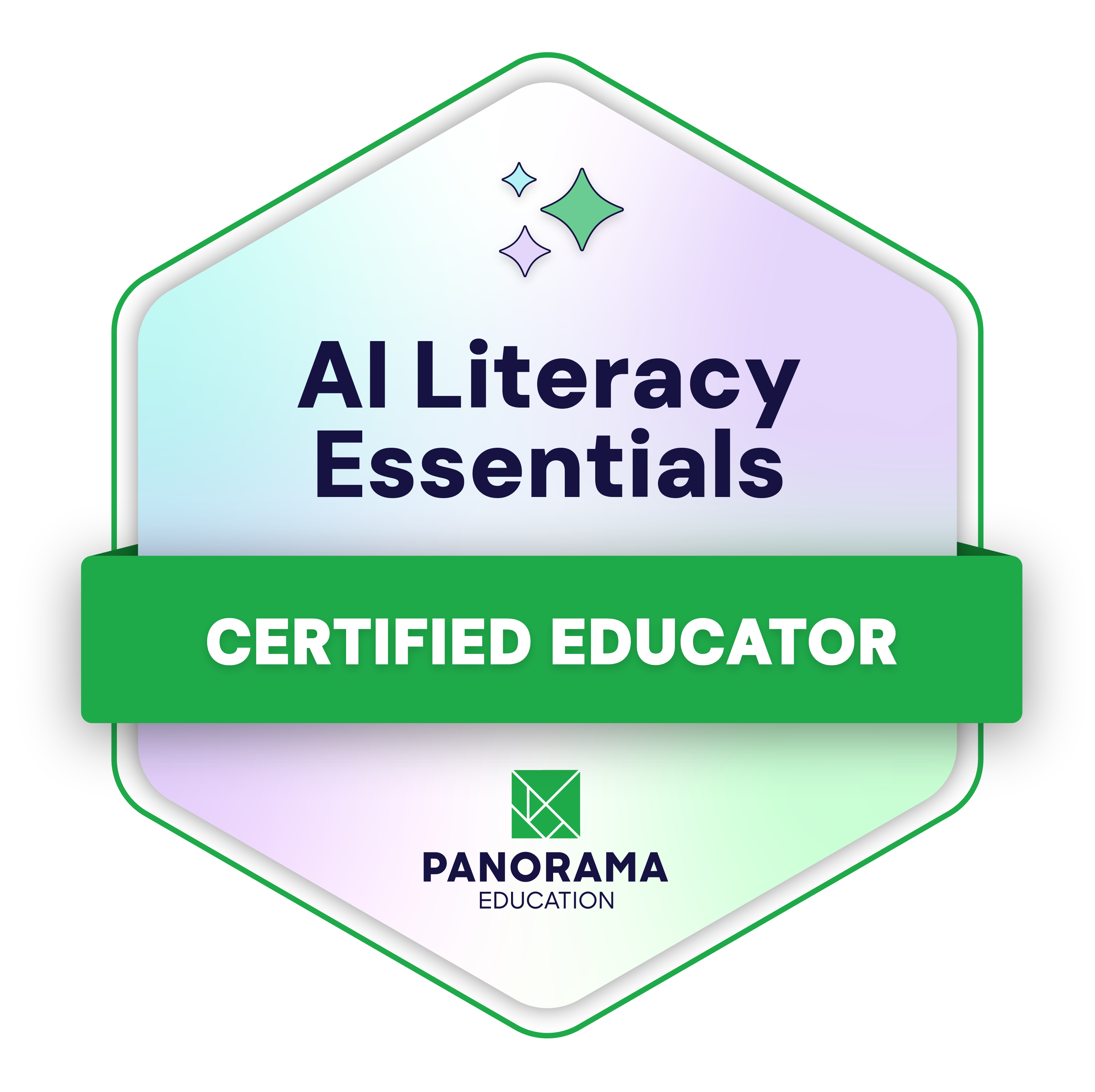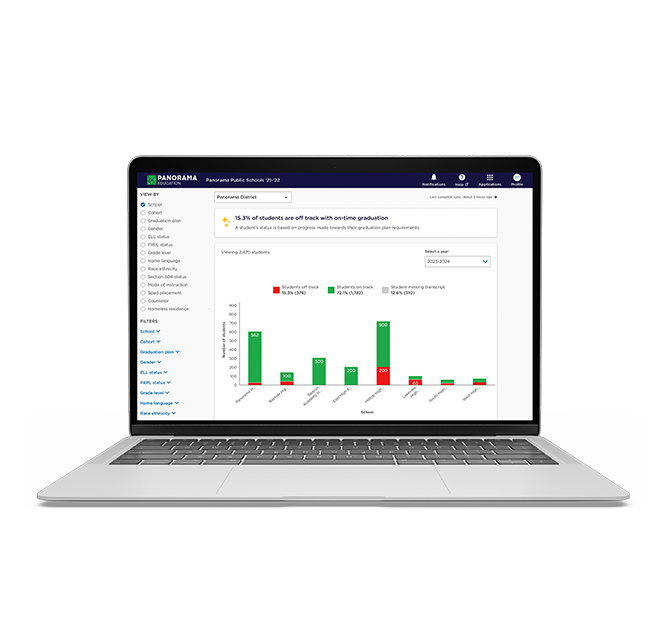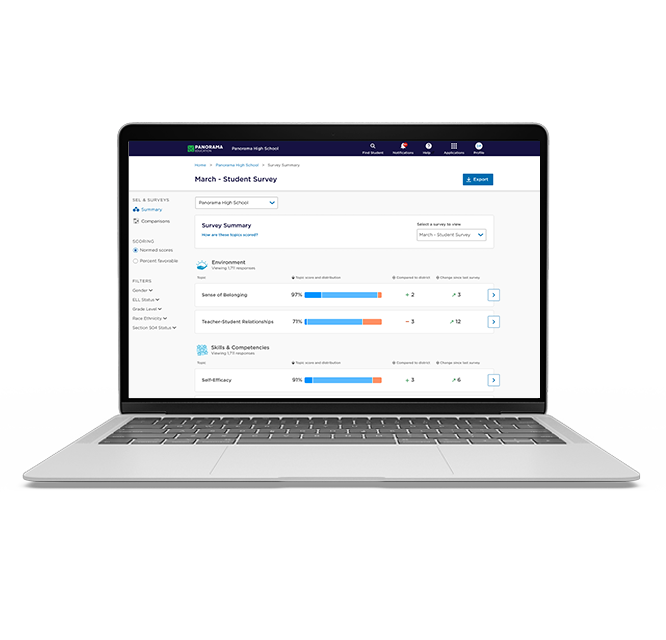Although an impressive 93% of districts report AI use in schools, it’s surprising that 59% of educators still haven’t received any training on AI tools. This gap is especially clear among veteran teachers. A 2024 survey revealed that only 16% of educators aged 54–74 feel confident in their AI skills, compared to 44% of younger colleagues.
These results highlight a growing urgency in education: AI is here—but readiness isn’t. That’s why AI literacy for educators is so important.
AI literacy for educators is the ability to understand, evaluate, and use AI tools responsibly and effectively in a school setting. This includes everything from identifying AI-generated content to integrating intelligent tools into instruction without undermining pedagogical goals.
As AI becomes embedded in daily teaching, district leaders have a unique opportunity—and responsibility—to guide their schools through this transformation with clarity, purpose, and support.
Why AI Literacy for Teachers Is Urgent and Foundational
Whether districts are ready or not, AI is already transforming schools. A 2024 survey by Digital Promise found that 93% of school districts report at least some schools are using AI technology in the classroom. Plus, at the time of the survey, 41% of districts had purchased AI-powered tools in the past year.
That should come as no surprise, seeing as Edtech Insiders reported on more than 250 AI-powered tools for education—and that number is only growing.
AI is helping teachers plan lessons, provide timely feedback, and differentiate instruction, not to mention the benefits for principals and administrators. With so many use cases for AI in education, district leaders must accept that the tools are here to stay.
Without district-level guidance on AI tools, educators risk dealing with:
- Confusion about what’s appropriate or effective
- Overreliance on unvetted tools
- Inconsistent application across classrooms and schools
At this point, AI literacy for teachers isn’t a luxury—it’s a foundational competency for modern education.
What AI Literacy for Educators Really Means
True AI literacy for educators goes beyond comfort with technology. It includes:
- Understanding what AI is (and isn’t)
- Evaluating which tools align with instructional goals
- Using AI to enhance—not replace—teaching
While digital literacy focuses on using computers and the internet effectively, AI literacy requires critical thinking about how algorithms make decisions, where bias might exist, and how AI can personalize learning without compromising student agency.
Here are some sample questions to assess your teachers’ experience and comfort levels with AI:
- Overall, how knowledgeable are you about AI?
- How confident do you feel in your ability to effectively address AI issues as they arise in your classroom?
- To what extent do you think AI can be beneficially integrated into K-12 education for students?
- How important is it to your effectiveness as an educator to participate in future professional development around AI?
- How often do you use AI to help you with administrative tasks?
- How often do you use AI to help you with tasks that support your teaching (e.g., using AI to help create lesson plans and assignments)?
- How important is it for teachers at your school to have a foundational understanding of AI?
- What are your biggest concerns about AI in K-12 education?
- How do you think AI can be most helpful in K-12 education?
- How well prepared is your school to use AI technology over the next year?
Download the AI Readiness Survey to gather community feedback on AI.
Integrating AI into Teaching Practices
Effective AI use starts with powerful tools—and succeeds when they’re used to enhance instruction. Here are four common and effective ways educators can begin integrating AI into teaching practices, with examples across grade levels and content areas:
1. Instructional Planning & Content Generation
- How it helps: Save time by generating draft lesson plans, warm-ups, quiz questions, and rubrics.
- Example: A middle school social studies teacher uses an AI assistant to generate differentiated reading passages about the Civil War, tailored to multiple Lexile levels.
2. Feedback & Assessment Support
- How it helps: Streamline formative feedback and scaffolding during writing or projects.
- Example: A high school English teacher uses an AI tool to generate formative comments on student essays, focusing on argument structure and clarity.
3. Scaffolding & Language Support
- How it helps: Translate instructions, simplify academic language, or provide alternative explanations.
- Example: An elementary teacher working with multilingual learners uses AI to generate bilingual vocabulary flashcards tied to the week’s math unit.
4. Personalization & Differentiation
- How it helps: Adapt content, tasks, or practice activities to individual student needs and learning styles.
- Example: A special education teacher uses an AI-driven platform to assign tailored math practice based on student IEP goals and current performance.
Tip: Always review and revise AI-generated content for accuracy and alignment with your standards and curriculum.
Why Every District Needs an AI Policy—Now
Even the best programs falter without clear guidelines. When teachers don’t know what’s permitted, they’re likely to either avoid AI altogether or use it inconsistently. It’s essential to discuss AI in teacher training and have a clear district AI policy.
While AI adoption is widespread, policies have not kept pace—only 45% of principals report having school or district policies or guidance on using AI. Teachers echo this gap: just just 34% reported having school or district policies on AI and academic integrity, a recent RAND survey reported.
Additionally, at least 28 states have now released AI frameworks or guidance for public schools—signaling a growing recognition of the need for thoughtful, proactive AI in education policy.
Districts must create AI policies that support innovation while safeguarding privacy and instructional integrity. Start by:
- Surveying stakeholders: Use tools like Panorama’s AI Readiness Survey to gather feedback from teachers, students, and families.
- Forming a working group: Include educators, administrators, IT leaders, students, and families to draft clear, adaptable guidelines.
- Clarifying key questions: Which tools are approved? What is the role of AI in instruction? How will student data be protected?
A strong policy foundation helps ensure AI use is safe, consistent, and aligned with learning goals. When districts lead with transparency and clarity, they empower educators to explore AI with confidence and purpose.
How to Build an Effective AI Training Program for Teachers
District leaders can lead the way by designing thoughtful, scalable AI training. Follow this step-by-step roadmap:
1. Assess current staff readiness
Use surveys and self-assessments to understand comfort and usage levels. This baseline helps tailor professional learning to meet educators where they are.
2. Identify instructional goals for AI use
Focus on how AI can support learning outcomes—not just save time. Ensure that AI use aligns with district priorities and standards.
3. Curate or create high-quality training experiences
Look for resources that emphasize pedagogy and responsible use of AI. Partner with trusted organizations or internal experts to build contextualized, relevant experiences.
4. Support ongoing peer learning and collaboration
Create space for teachers to share experiments, successes, and questions. This peer-to-peer model builds trust and accelerates adoption across schools.
5. Monitor progress and make adjustments
Use feedback loops and classroom observation to refine your approach. Considering the speed at which AI is evolving, these regular check-ins will make sure that training continues to meet educators’ needs.
Lead the Way: How District Leaders Can Drive AI Readiness
The future of education is already unfolding, and AI literacy for educators is critical to teaching and learning in the years ahead. But if district leaders lead with clarity and intention, educators will feel supported and prepared for a path to thrive with new resources at their disposal.
Your vision, your policies, and your investment in AI training for teachers will determine whether AI becomes a tool for empowerment and innovation—or confusion and inconsistency.
The best way to start is by listening to your educators. Build a roadmap grounded in their needs, and commit to a future where every teacher is ready to lead in the age of AI.
Empower Your Educators with the Right Tools—and the Right Support
AI literacy isn’t a distant goal—it’s an immediate necessity. As AI reshapes the landscape of education, district leaders have a pivotal role to play in ensuring that every educator feels confident, prepared, and supported. By building thoughtful policies, offering robust training, and grounding AI initiatives in real instructional goals, districts can unlock AI’s true potential: enhancing teaching and learning, not replacing it.
That’s where Panorama Solara comes in. Designed specifically for K–12 education, Solara empowers districts to integrate AI safely, responsibly, and effectively into their classrooms. With secure data practices, educator-centered tools, and built-in professional development support, Solara helps schools harness the power of AI while staying aligned with their core mission: advancing student success.
When districts invest in building AI literacy—and in solutions like Solara that put educators first—they aren’t just keeping up with change. They’re leading it.
Learn how Panorama Solara can support your district’s journey into the future of education.




.png?width=772&height=257&name=District%20Leader%20%20Broad%20Promo%20Email%20-%20FINAL%20(1).png)






![How AI Ready Is Your District? [Infographic]](https://www.panoramaed.com/hubfs/iStock-1912513615.jpg)